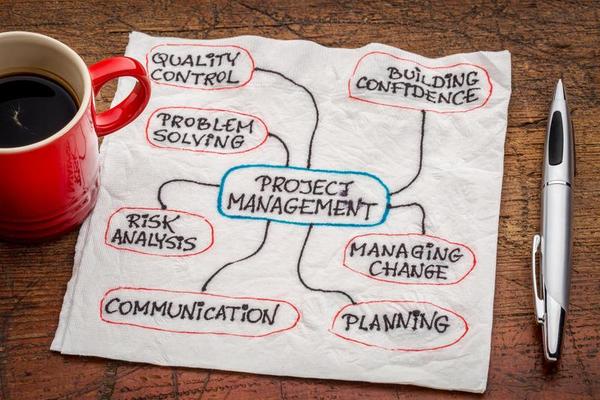The Art of Project Management: Mastering the Essentials
The Art of Project Management: Mastering the Essentials
Blog Article

In today's fast-paced and ever-evolving business landscape, the ability to effectively manage projects has become a fundamental skill that can define the success of organizations. Project management is not just a role; it is an art that combines strategic planning, team dynamics, and innovative problem-solving. As businesses strive for efficiency and adaptability, mastering the essentials of project management has never been more crucial.
Understanding the foundational principles of project management empowers individuals and teams to navigate complex challenges, align resources, and achieve goals. From small initiatives to large-scale transformations, the methodologies and tools employed in project management can make a significant difference in outcomes. Whether you are an aspiring project manager or looking to refine your skills, embracing the art of project management will enable you to lead projects with confidence and precision.
Project Management Course
Key Principles of Project Management
Effective project management hinges on a few fundamental principles that guide teams toward successful outcomes. One key principle is clear communication. Establishing open lines of communication among team members, stakeholders, and clients ensures that everyone is on the same page regarding project goals, expectations, and progress. Regular updates, meetings, and feedback sessions foster collaboration and help address issues before they escalate.
Another important principle is careful planning. Properly defining the project's scope, setting achievable objectives, and creating a detailed timeline are essential for steering efforts in the right direction. Utilizing tools such as Gantt charts or project management software can aid in visualizing project tasks and milestones. Planning not only anticipates potential challenges but also aligns the team’s resources effectively, allowing for smoother execution.
Lastly, adaptability is crucial in project management. Even with the best-laid plans, unexpected changes can arise, be it shifts in client requirements or unforeseen obstacles. The ability to pivot and respond to these changes while maintaining project integrity is vital. Agile methodologies, for example, encourage iterative development and frequent reassessment, allowing teams to remain flexible and responsive to new information or changing circumstances.
Tools and Techniques
In the realm of project management, various tools and techniques can significantly enhance efficiency and collaboration. Project management software such as Microsoft Project, Trello, and Asana are popular choices for organizing tasks, assigning responsibilities, and tracking progress. These platforms provide visual interfaces that allow teams to see the status of their projects at a glance, facilitating better communication and accountability among team members.
Another essential technique in project management is the use of Gantt charts. These charts offer a visual timeline of the project schedule, clearly displaying start and end dates of tasks, dependencies, and milestones. By incorporating Gantt charts into project planning, managers can more accurately allocate resources and identify potential bottlenecks early in the process, allowing for timely adjustments.
Additionally, the Agile methodology continues to gain traction in project management. This approach emphasizes flexibility and iterative progress, allowing teams to adapt to changing requirements and prioritize high-value deliverables. Agile tools like Scrum boards and Kanban systems enable teams to maintain focus and streamline workflows, ensuring that each aspect of the project is continually refined throughout the development process.
Managing Risks Effectively
In project management, effectively managing risks is crucial for the successful delivery of any project. Risk management involves identifying, assessing, and mitigating potential threats that could derail project objectives. This proactive approach not only safeguards the project from unforeseen challenges but also enhances the overall planning and execution process. By establishing a risk management framework, project managers can prioritize risks based on their likelihood and potential impact, allowing teams to focus on the most critical areas that require attention.
Communication plays a vital role in risk management. It is essential for project managers to foster an open environment where team members feel comfortable reporting potential risks. Regular meetings and updates ensure that everyone is aware of the current risk landscape and encourages collective problem-solving. By sharing insights and experiences, the team can develop comprehensive strategies to mitigate identified risks effectively. Tools such as risk registers can help document risks and track their status, making it easier to monitor and respond rapidly as the project evolves.
Finally, it's important to recognize that risk management is an ongoing process. As a project progresses, new risks may emerge, and existing ones may change in significance. Continuous monitoring and reevaluation of risks are necessary to adapt to these changes. Incorporating lessons learned from previous projects into the risk management strategy allows teams to improve their resilience against future challenges. By fostering a culture of adaptability, teams can better navigate uncertainties and keep projects on track, ultimately leading to successful outcomes.
Leading a Successful Project Team
Effective leadership is essential for a successful project team. A project manager must cultivate an inclusive environment where team members feel empowered to express their ideas and contribute to the project’s goals. Fostering clear communication channels is vital, as it encourages collaboration and builds trust among team members. A project manager should invest time in understanding the strengths and weaknesses of each member, allowing for effective delegation and maximizing team potential.
Motivating the team is equally important. Recognizing achievements, both big and small, boosts morale and keeps the team engaged. Setting clear goals and maintaining regular check-ins can help maintain focus and motivation. Providing constructive feedback is crucial, as it helps team members grow and improves overall performance. A supportive leader inspires confidence and encourages a culture of continuous improvement.
Conflict resolution is a natural part of team dynamics and should be approached with care. Understanding the underlying issues and facilitating open discussions can transform disagreements into productive dialogues. A successful project manager knows how to mediate conflicts and find common ground that aligns with project objectives. This approach not only resolves tensions but also strengthens the team's cohesion and resilience, ultimately leading to the accomplishment of the project’s goals.
Report this page